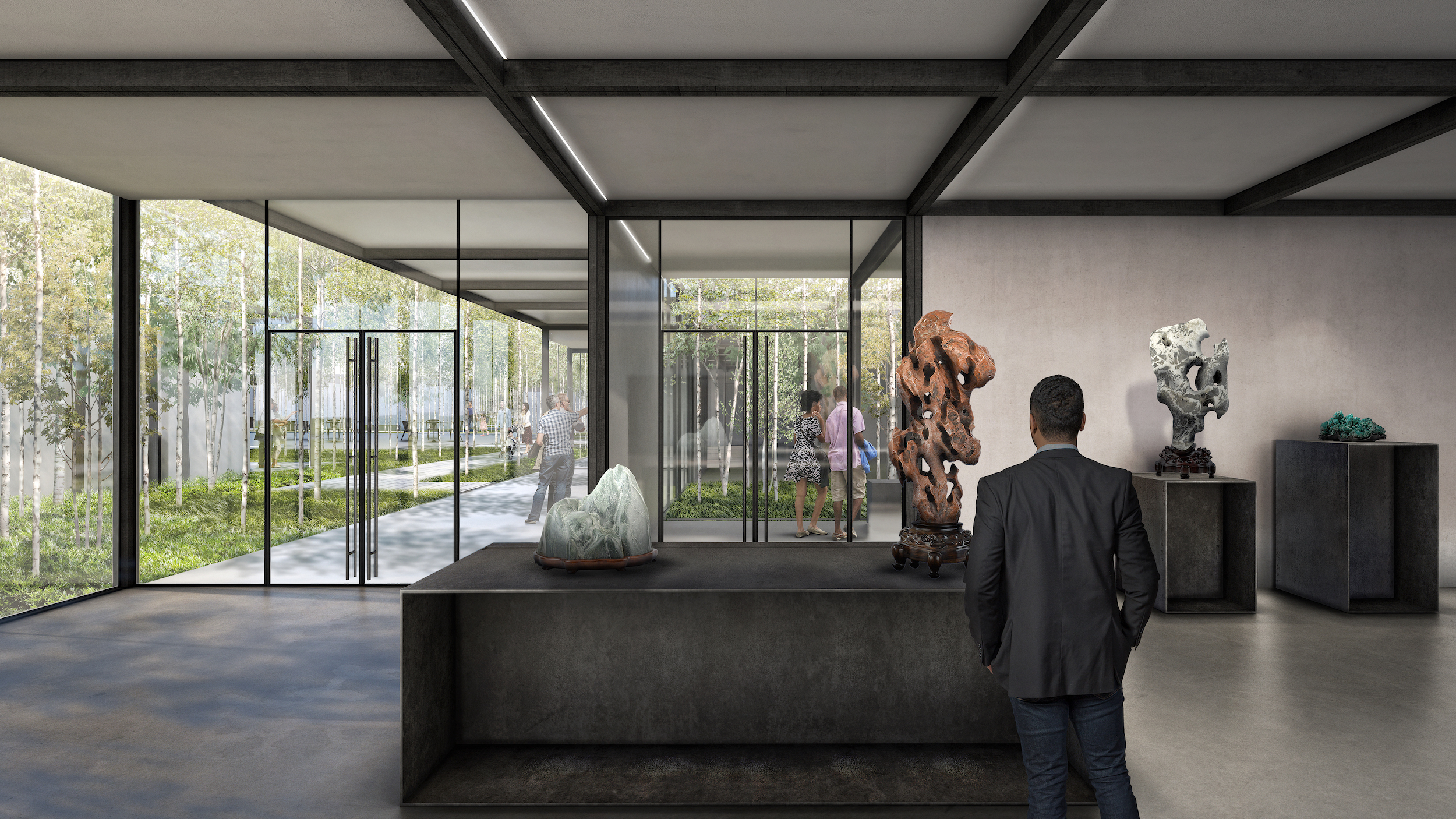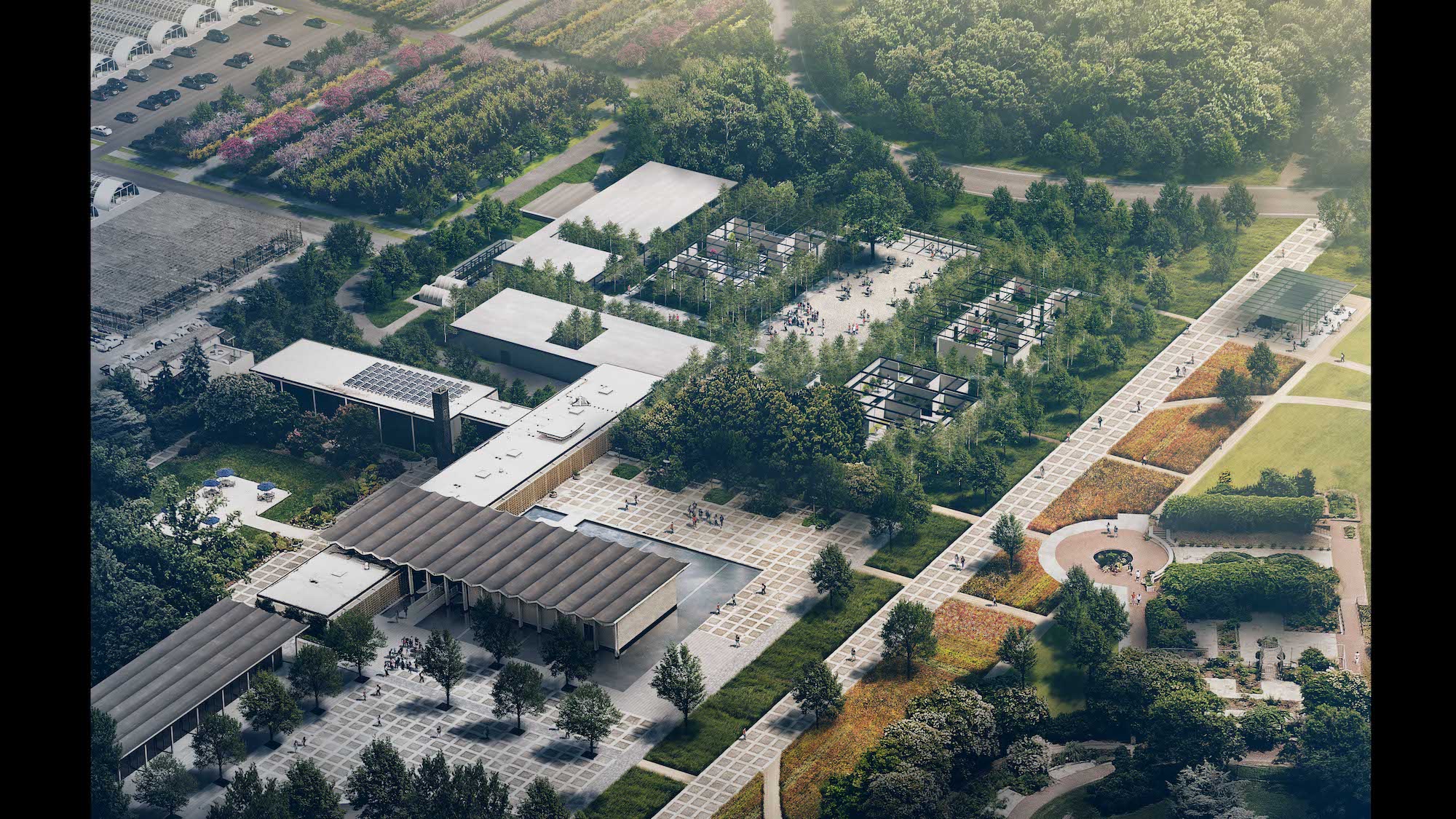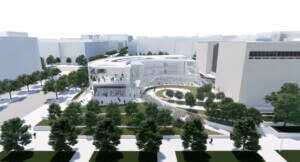Cambridge, Massachusetts-based landscape architecture firm Reed Hilderbrand and Trahan Architects, which maintains offices in New Orleans and New York City, have announced that the U.S. Commission of Fine Arts has greenlit their concept design for the National Bonsai & Penjing Museum at the United States National Arboretum in northeast Washington, D.C.
The concept design for the National Bonsai Museum & Penjing Museum is the first major project within Reed Hilderbrand’s master plan update for the 109-acre core landscape of the U.S. National Arboretum, which dates back to 1927. As a press release detailed, the master plan update (which reexamines and reimagines a 2007 master plan) also considers the larger landscape of the U.S. National Arboretum and “evaluates sustainability, accessibility, and safety within the site while also seeking to reduce impervious surfaces across” the 446-acre botanical research complex operated by the United States Department of Agriculture’s Agricultural Research Service. In addition to the National Bonsai & Penjing Museum, other gardens and collections at the arboretum include the National Grove of State Trees, the Fern Valley Native Plant Collections, the National Herb Garden, and the famed Azalea Collections, among many other horticultural highlights.

While the master plan, which was approved by the U.S. Commission of Fine Arts this past summer, takes the larger landscape of the U.S. National Arboretum into consideration, the National Bonsai & Penjing Museum concept responds to a world-renowned collection that’s decidedly more diminutive in nature. Established in 1982 as the world’s first public bonsai museum and sustained by the nonprofit National Bonsai Foundation (NBF), the museum’s core collections—Japanese, Chinese, and North American—are spread across three corresponding pavilions and other areas. The museum is also home to a collection of viewing stones, an art form related to bonsai, which populates its own pavilion.

The approved concept design, funded through a gift to the NBF and building off the renovations at the Japanese Pavilion completed in 2017, will establish a network of circulation-improving paths extending from a central courtyard, all of which lead visitors to the museum’s reimagined four core exhibitions, expanded classroom spaces, and administrative areas. As envisioned by Reed Hilderbrand and Trahan Architects, the collection exhibitions will take the form of “gardens rather than buildings” and “blur their boundaries with the larger, surrounding garden to offer continuing revelation of surprise and discovery.” Improved universal accessibility and wayfinding, as well as establishing a stronger connection to the arboretum core, including the adjacent Ellipse Meadow, were also key goals in the design.
“I want to underscore what I really appreciate about the new site plan,” noted Elizabeth K. Meyer, vice chairman of the U.S. Commission of Fine Arts, in a hearing on the concept design. “One is the clarity of the spatial sequence, the degree to which courtyards and gardens build rooms and thresholds as a coherent sequence. The second is that it’s really rare that we get a design team that isn’t thinking about the building on one drawing and the landscape on another drawing. We just don’t get this kind of collaboration.”
The coherence Meyer speaks of within the museum’s gardens and exhibitions was achieved in numerous ways including a thick grove of understory trees that represent a mix of species and serve as the “principal image and identity” of the revitalized museum. Architectural elements, including path-flanking backdrop walls and charred wood posts and trellises that “filter light and shape a sense of enclosure,” will be “restrained and practical” as to not detract from the art forms on display.

“It’s about deferring to the power of the bonsai and penjing,” Trey Trahan, founding principal of Trahan Architects, said. “The architectural expression is subtle—composed of elemental components that respond to the unique environmental conditions of the site. We wanted the visitor to embark upon a journey that created a sense of mystery, where the boundaries between the landscape and the architecture are blurred, inviting people to reflect upon these unique cultural artifacts within a lush garden setting.”
While the U.S. National Arboretum resumed normal, pre-COVID public hours in mid-September, the National Bonsai & Penjing Museum as well as the arboretum’s welcome center and administrative building remain closed due to the pandemic.











